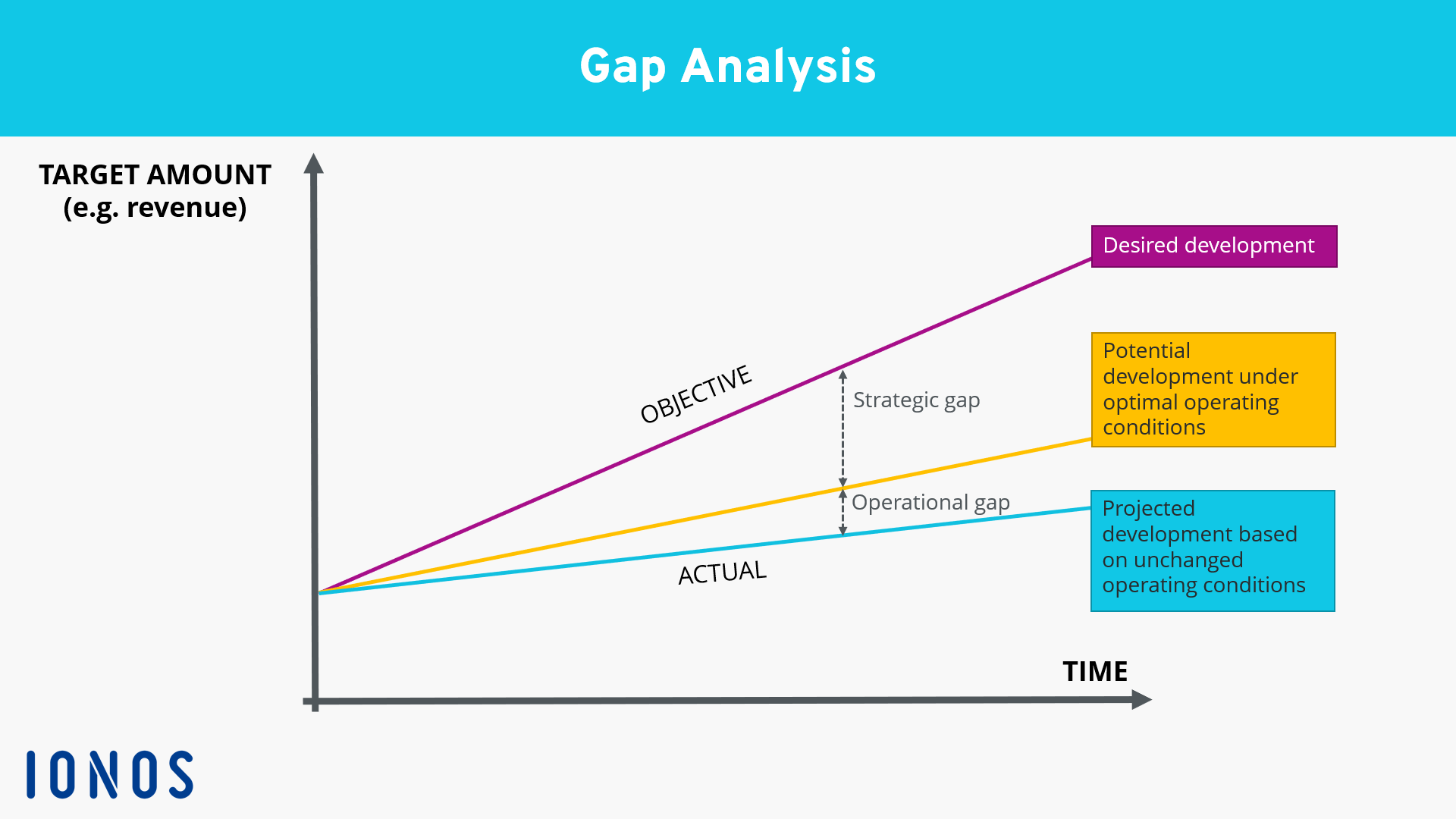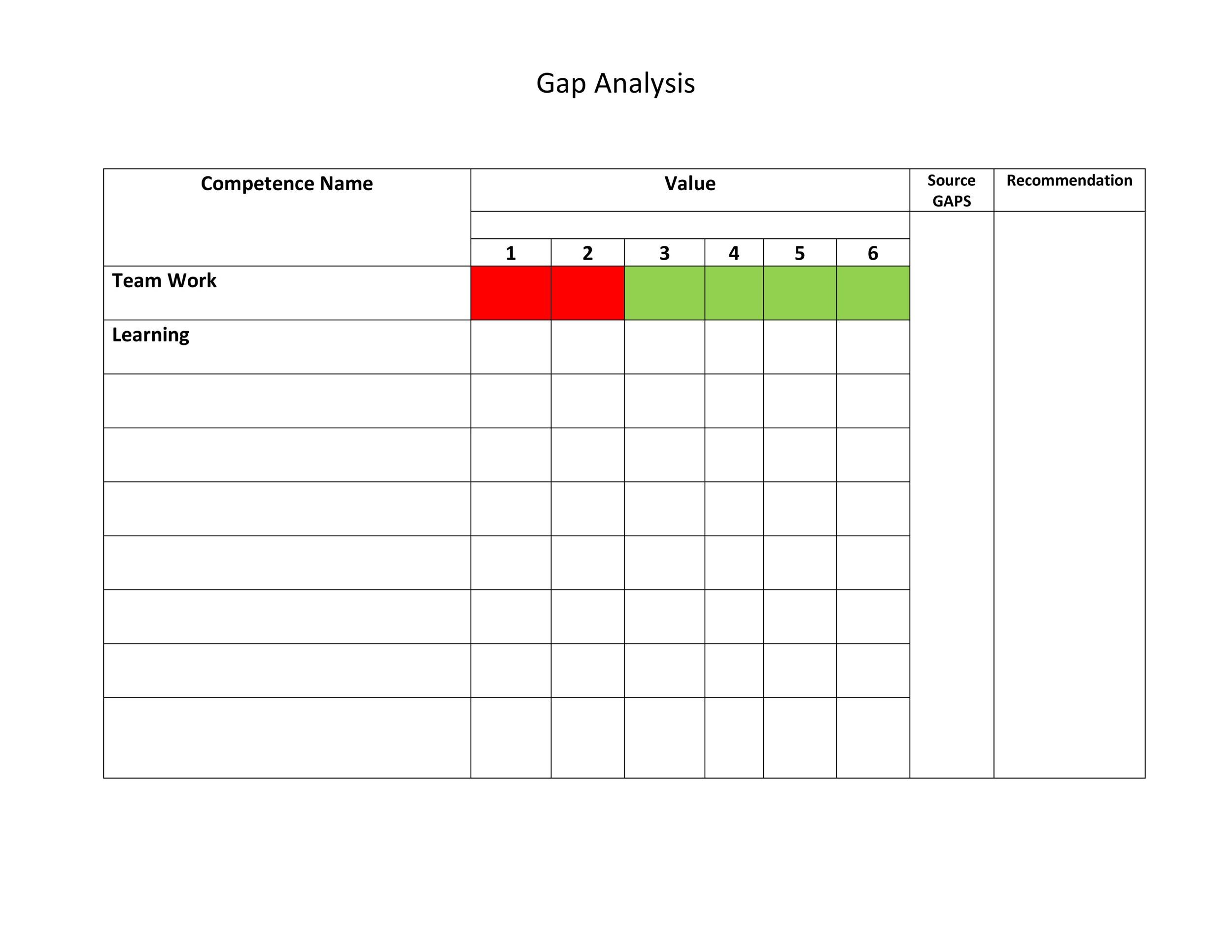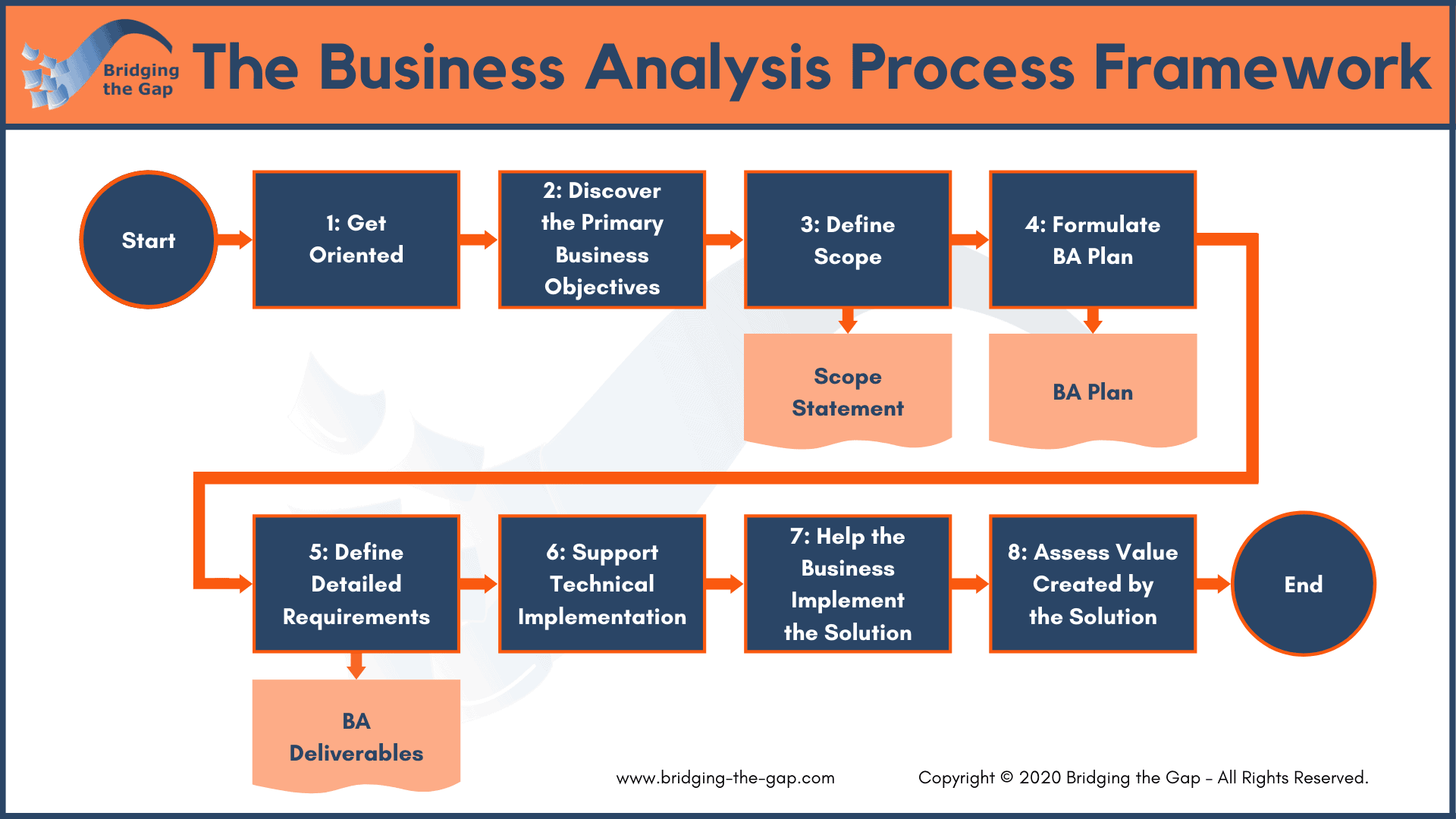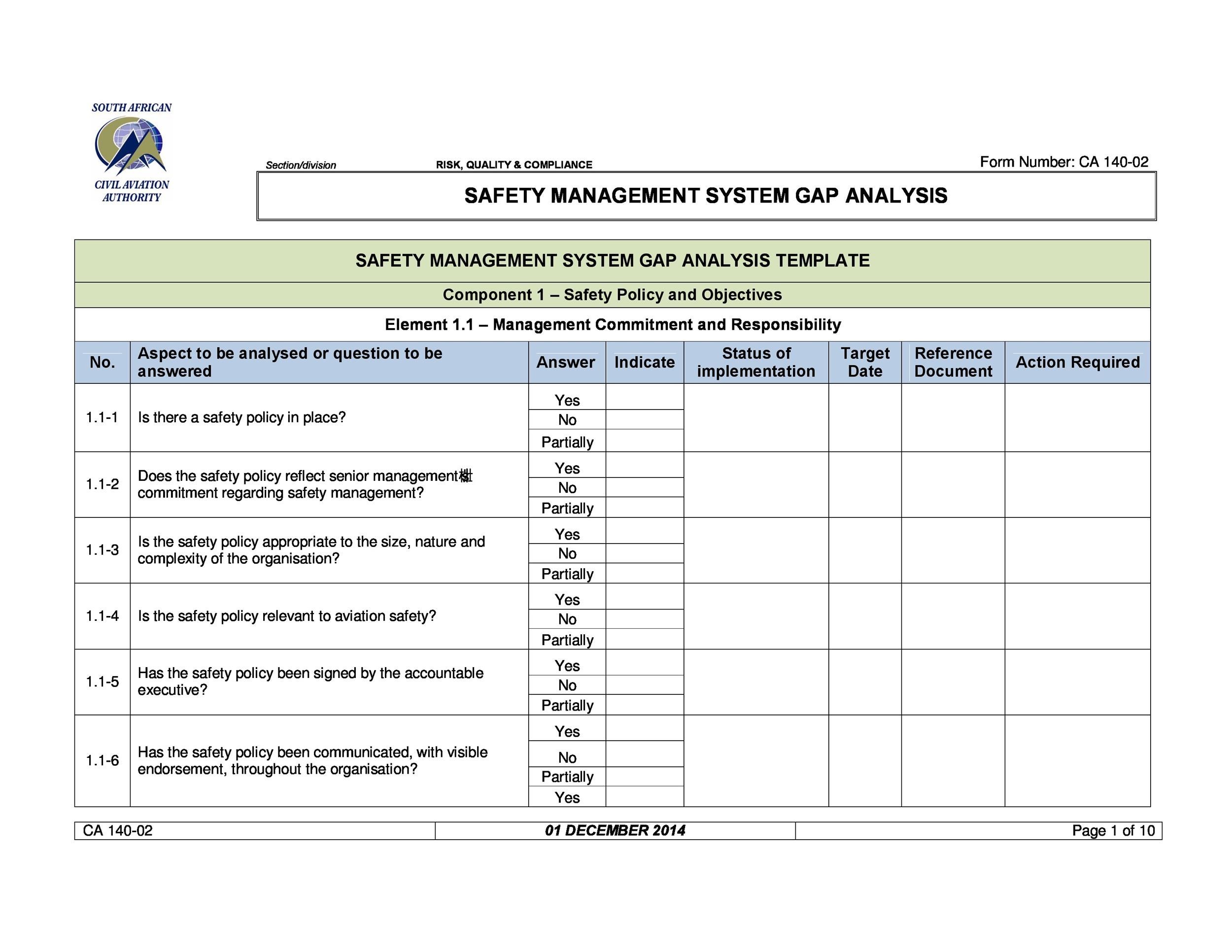In the realm of business and technology, the Business Analyst – Gap Analyst plays a pivotal role, bridging the divide between the two worlds. This highly specialized professional possesses the acumen to identify gaps, devise solutions, and ensure seamless alignment with organizational goals. Join us as we delve into the intricacies of this fascinating field, exploring its challenges, opportunities, and the profound impact it has on business outcomes.
Introduction

A Business Analyst – Gap Analyst is a professional who bridges the gap between business and technology. They identify and analyze the differences between an organization’s current state and its desired future state. This information is then used to develop and implement solutions that close the gaps and improve the organization’s performance.
Gap analysis is a critical process for any organization that wants to improve its operations. It helps to identify areas where the organization is not meeting its goals and objectives. This information can then be used to develop and implement solutions that will improve the organization’s performance.
Challenges and Opportunities
The role of a Business Analyst – Gap Analyst is challenging but also rewarding. One of the biggest challenges is the need to understand both the business and technology sides of an organization. This requires a strong foundation in both areas. Another challenge is the need to be able to communicate effectively with both business and technology stakeholders. This is essential for ensuring that the gap analysis process is successful.
Despite the challenges, there are also many opportunities for Business Analysts – Gap Analysts. The field is growing rapidly as more and more organizations recognize the importance of gap analysis. This growth is expected to continue in the years to come. As a result, there is a high demand for qualified Business Analysts – Gap Analysts.
Real-World Examples
Gap analysis has been used to improve the performance of organizations in a variety of industries. For example, a gap analysis was used to identify the reasons why a manufacturing company was not meeting its production goals. The gap analysis found that the company was not using its equipment efficiently and that there were several bottlenecks in the production process. The company was able to use this information to develop and implement solutions that improved its production efficiency and met its production goals.
In another example, a gap analysis was used to identify the reasons why a software development company was not meeting its customer satisfaction goals. The gap analysis found that the company was not communicating effectively with its customers and that there were several bugs in the software. The company was able to use this information to develop and implement solutions that improved its customer communication and reduced the number of bugs in the software.
Skills and Qualifications

Gap analysts require a combination of hard and soft skills to excel in their roles. These include business acumen, analytical thinking, and problem-solving abilities.
Below is a list of essential skills and qualifications for a Gap Analyst:
Business Acumen
- Understanding of business processes and operations
- Ability to identify and assess business needs
- Knowledge of industry best practices
Analytical Thinking
- Ability to gather, interpret, and analyze data
- Strong logical reasoning and problem-solving skills
- Experience in using analytical tools and techniques
Problem-Solving Abilities
- Ability to identify and define problems
- Skill in developing and implementing solutions
- Experience in working with cross-functional teams to resolve issues
Tools and Techniques: Business Analyst – Gap Analyst
Gap analysts rely on various tools and techniques to conduct their work effectively. These include:
Business Process Modeling
Business process modeling is a technique used to visualize and analyze business processes. This helps gap analysts understand the current state of a process and identify areas for improvement.
Gap Analysis Techniques
Gap analysis techniques are used to compare the current state of a process to the desired state. This helps gap analysts identify the gaps that need to be addressed.
Stakeholder Management
Stakeholder management is a critical part of gap analysis. Gap analysts need to be able to effectively communicate with stakeholders to gather requirements and ensure that the gap analysis is aligned with the organization’s goals.
Business Impact
Gap Analysis can significantly impact business outcomes, driving improvements in various areas:
Improved Efficiency
– Streamlined processes by identifying and addressing inefficiencies
– Reduced waste and duplication of efforts
– Enhanced productivity through optimized resource allocation
Reduced Costs
– Lowered operational expenses by eliminating unnecessary costs
– Optimized resource utilization, reducing waste and overspending
– Increased cost-effectiveness through improved decision-making
Enhanced Customer Satisfaction, Business Analyst – Gap Analyst
– Improved customer experience by identifying and addressing gaps in service
– Increased customer loyalty through better responsiveness and personalization
– Enhanced reputation and positive customer feedback
Case Studies

Gap Analysis projects play a crucial role in bridging the gap between an organization’s current state and its desired future state. Real-world case studies demonstrate the effectiveness of this approach in addressing specific challenges and driving organizational improvement.
Business analysts and gap analysts play a crucial role in streamlining operations and improving efficiency. They identify gaps in processes and systems, providing valuable insights that can lead to significant improvements. For instance, in the case of Nelnet Student Loan , business analysts helped optimize loan processing and reduce turnaround time by identifying and addressing bottlenecks in the workflow.
The following case studies showcase successful Gap Analysis projects, highlighting the challenges faced, strategies employed, and positive outcomes achieved.
Challenge: Aligning IT Capabilities with Business Objectives
- Challenge: A global technology company faced challenges in aligning its IT capabilities with its rapidly evolving business objectives.
- Solution: The company conducted a comprehensive Gap Analysis to identify misalignments between its IT systems, processes, and business strategies.
- Outcome: The Gap Analysis resulted in a roadmap for IT investments and initiatives that directly supported the company’s business goals, leading to improved efficiency and customer satisfaction.
Industry Trends

The role of Business Analysts – Gap Analysts is being shaped by several key industry trends:
- Digital transformation: The increasing adoption of digital technologies is transforming businesses and creating new opportunities for Business Analysts – Gap Analysts to help organizations bridge the gap between their current and future states.
- Agile methodologies: The adoption of agile methodologies, such as Scrum and Kanban, is changing the way that organizations develop and deliver products and services. Business Analysts – Gap Analysts are playing a key role in helping organizations to transition to agile and to realize the benefits of this approach.
- Data analytics: The increasing availability of data is providing Business Analysts – Gap Analysts with new insights into business processes and customer behavior. This data is helping them to identify gaps and opportunities for improvement, and to develop more effective solutions.
These trends are having a significant impact on the skills and knowledge required by Business Analysts – Gap Analysts, the tools and techniques they use, and the way they collaborate with stakeholders.
Impact on Skills and Knowledge
The digital transformation and the adoption of agile methodologies are requiring Business Analysts – Gap Analysts to have a deeper understanding of technology and business processes. They also need to be able to work effectively in cross-functional teams and to communicate complex technical concepts to non-technical stakeholders.
Impact on Tools and Techniques
The increasing availability of data is leading Business Analysts – Gap Analysts to adopt new tools and techniques for data analysis and visualization. They are also using more collaborative tools, such as wikis and online collaboration platforms, to share information and work together with stakeholders.
Impact on Collaboration with Stakeholders
The adoption of agile methodologies is changing the way that Business Analysts – Gap Analysts collaborate with stakeholders. They are now working more closely with development teams and end-users throughout the development process. This is helping to ensure that the solutions they develop are aligned with the needs of the business.
Examples
Here are some specific examples of how these trends are transforming the role of Business Analysts – Gap Analysts in real-world organizations:
- At a major financial institution, Business Analysts – Gap Analysts are using data analytics to identify opportunities to improve the customer experience. They are using this data to develop new products and services that meet the needs of customers.
- At a leading technology company, Business Analysts – Gap Analysts are working closely with development teams to implement agile methodologies. They are helping to ensure that the development process is efficient and that the products and services meet the needs of the business.
- At a global healthcare organization, Business Analysts – Gap Analysts are using collaborative tools to share information and work together with stakeholders from around the world. This is helping to ensure that the organization is able to provide high-quality healthcare services to patients.
Staying Ahead of the Trends
Business Analysts – Gap Analysts can stay ahead of these trends by:
- Keeping up with the latest technology trends: Reading industry publications, attending conferences, and taking online courses are all great ways to stay up-to-date on the latest technology trends.
- Developing strong business acumen: Business Analysts – Gap Analysts need to have a deep understanding of business processes and how technology can be used to improve them. They can develop this acumen by reading business books, attending industry events, and talking to business leaders.
- Building strong relationships with stakeholders: Business Analysts – Gap Analysts need to be able to build strong relationships with stakeholders from all levels of the organization. They can do this by being responsive, proactive, and by always looking for ways to add value.
By following these tips, Business Analysts – Gap Analysts can stay ahead of the trends and continue to be valuable contributors to their organizations.
Career Path

Business Analyst – Gap Analysts can pursue various career paths. With experience and expertise, they can advance to more senior roles or transition into different domains.
Potential career paths include:
Senior Business Analyst
Senior Business Analysts lead and mentor junior analysts, participate in complex projects, and take on greater responsibilities within the organization. They may specialize in a particular industry or domain, providing deep expertise in that area.
Project Manager
Project Managers oversee the execution of projects, ensuring they are completed on time, within budget, and according to specifications. They work closely with stakeholders, including clients, team members, and senior management, to ensure project success.
Business Consultant
Business Consultants provide advice and guidance to organizations on how to improve their business processes, operations, and overall performance. They leverage their analytical and problem-solving skills to identify areas for improvement and develop strategies to address them.
Explain educational and training opportunities for Business Analyst – Gap Analysts
Aspiring Business Analyst – Gap Analysts can pursue various educational and training opportunities to enhance their skills and knowledge. These include industry-recognized certifications, online courses, and in-person or virtual workshops.
In the realm of business analysis, Gap Analysts play a crucial role in identifying and addressing gaps between current and desired states. Similarly, the recent Student Loan Pause serves as a temporary bridge to alleviate financial burdens for borrowers. As Business Analyst – Gap Analysts, we must remain vigilant in assessing the impact of such interventions and exploring innovative solutions to bridge the gaps that emerge during and after these pauses.
Certifications
Obtaining relevant certifications can validate a Business Analyst – Gap Analyst’s expertise and demonstrate their commitment to professional development. Some key certifications include:
- IIBA CBAP (Certified Business Analysis Professional): This certification is offered by the International Institute of Business Analysis (IIBA) and is widely recognized as the industry standard for business analysts.
- PMI-PBA (Professional in Business Analysis): This certification is offered by the Project Management Institute (PMI) and focuses on the application of business analysis techniques in project management.
Online Courses
Several reputable institutions and platforms offer online courses specifically tailored for gap analysis in business analysis. These courses provide a flexible and convenient way to gain knowledge and skills:
- Gap Analysis for Business Analysts: Coursera (offered by the University of California, Irvine)
- Gap Analysis for Business Transformation: edX (offered by the University of Texas at Austin)
- Business Analysis: Gap Analysis and Requirements Elicitation: LinkedIn Learning
Workshops
Workshops provide hands-on experience and practical insights into gap analysis techniques and best practices. These workshops can be offered in-person or virtually:
- Gap Analysis for Business Analysts: International Institute of Business Analysis (IIBA)
- Business Analysis Gap Analysis Workshop: Project Management Institute (PMI)
- Gap Analysis for Business Transformation: Simplilearn
Interview Preparation

Preparing for a Business Analyst – Gap Analyst interview requires thorough preparation to showcase your skills and qualifications. By following these tips, you can increase your chances of making a positive impression and securing the role.
To ensure a successful interview, it’s crucial to research the company and the specific role you’re applying for. This demonstrates your interest and enthusiasm for the position. Familiarize yourself with the company’s mission, values, products or services, and industry standing. Additionally, study the job description carefully to understand the key responsibilities and requirements.
Business Analyst – Gap Analyst roles are crucial for organizations to bridge the gap between business needs and technology solutions. For those seeking the latest insights on student financial aid, Student Loan News provides comprehensive coverage of federal and private student loan programs, repayment options, and refinancing strategies.
By leveraging their analytical skills, Business Analyst – Gap Analysts can effectively utilize such resources to identify opportunities and optimize business processes.
Practice Answering Common Interview Questions
Anticipate common interview questions and prepare thoughtful responses that highlight your relevant skills and experiences. Some common questions include:
- Tell us about your experience in gap analysis.
- How do you approach identifying and prioritizing gaps?
- What tools and techniques do you use for gap analysis?
- Can you provide an example of a successful gap analysis project you’ve worked on?
- How do you stay up-to-date on industry best practices for gap analysis?
Prepare a Portfolio of Work
If possible, prepare a portfolio of your work that showcases your gap analysis skills. This could include case studies, project reports, or presentations that demonstrate your ability to identify, analyze, and address gaps. Bringing a portfolio to the interview provides tangible evidence of your capabilities and adds credibility to your application.
Professional Organizations
Professional organizations play a crucial role in the career development of Business Analyst – Gap Analysts. They provide opportunities for networking, continuing education, and professional certification.
Professional Organizations for Business Analyst – Gap Analysts
| Organization | Acronym | Website | Membership Fee | Benefits of Membership | Contact Information |
|---|---|---|---|---|---|
| International Institute of Business Analysis (IIBA) | IIBA | https://www.iiba.org/ | Varies based on membership level |
|
Email: [email protected] Phone: +1 (866) 281-0407 |
| International Requirements Engineering Board (IREB) | IREB | https://www.ireb.org/ | Varies based on membership level |
|
Email: [email protected] Phone: +49 (0)721 966 849 0 |
| Association for Business Process Management Professionals (ABPMP) | ABPMP | https://www.abpmp.org/ | Varies based on membership level |
|
Email: [email protected] Phone: +1 (800) 456-1210 |
Each of these organizations has a unique mission, vision, and values. The IIBA is the world’s leading professional association for business analysts. Its mission is to advance the practice of business analysis and to provide professional development opportunities for its members. The IREB is a non-profit organization that promotes the professionalization of requirements engineering. Its mission is to develop and maintain a certification program for requirements engineers. The ABPMP is a global organization that promotes the professionalization of business process management. Its mission is to provide professional development opportunities for its members and to advance the practice of business process management.
The most suitable organization for a Business Analyst – Gap Analyst will depend on their specific needs and career goals. If they are looking for a certification program, then the IIBA or IREB may be a good option. If they are looking for networking opportunities and continuing education programs, then the ABPMP may be a good option.
Importance of Professional Organizations for Business Analyst – Gap Analysts
Professional organizations play a vital role in the career development of Business Analyst – Gap Analysts. They provide opportunities for networking, continuing education, and professional certification. These benefits can help Business Analyst – Gap Analysts to stay up-to-date on the latest trends and best practices in their field. They can also help Business Analyst – Gap Analysts to build a strong professional network and to advance their careers.
- Networking: Professional organizations provide opportunities for Business Analyst – Gap Analysts to network with other professionals in their field. This can help them to build relationships with potential employers, clients, and mentors.
- Continuing education: Professional organizations offer a variety of continuing education programs that can help Business Analyst – Gap Analysts to stay up-to-date on the latest trends and best practices in their field.
- Professional certification: Professional organizations offer a variety of professional certification programs that can help Business Analyst – Gap Analysts to demonstrate their skills and knowledge.
- Career advancement: Professional organizations can help Business Analyst – Gap Analysts to advance their careers by providing them with access to resources, networking opportunities, and continuing education programs.
Online Resources
The internet offers a wealth of resources for Business Analyst – Gap Analysts, including articles, blogs, webinars, podcasts, and industry forums. These resources can provide valuable insights into the field, help you stay up-to-date on the latest trends, and connect with other professionals.
Business Analysts and Gap Analysts play a pivotal role in bridging the gap between an organization’s current state and its desired future. By identifying areas for improvement and developing strategies to address them, these professionals enable organizations to optimize their operations and achieve their business objectives.
A comprehensive understanding of student loan repayment options and strategies, such as those outlined in Student Loan Repayment , can empower Business Analysts and Gap Analysts to effectively address financial challenges faced by employees, ultimately contributing to a more productive and engaged workforce.
Articles and Blogs
- Business Analysis Zone: https://www.businessanalysiszone.com/
- IIBA Blog: https://www.iiba.org/blog/
- Bridging the Gap: https://bridging-the-gap.com/
- Business Analyst Times: https://www.businessanalysttimes.com/
- Gap Analysis Guide: https://gap-analysis-guide.com/
Webinars and Podcasts
- IIBA Webinars: https://www.iiba.org/webinars/
- Business Analysis Podcast: https://www.businessanalysispodcast.com/
- The Gap Analysis Podcast: https://www.thegapanalysispodcast.com/
- Business Analysis Unplugged: https://www.businessanalysisunplugged.com/
Industry Forums
- LinkedIn Groups: There are several LinkedIn groups dedicated to Business Analysis and Gap Analysis, such as the IIBA Business Analysis Group and the Gap Analysis Forum.
- Online Communities: There are also online communities such as the Business Analyst Board and the Gap Analysis Forum where you can connect with other professionals and discuss best practices.
Conclusion
As we conclude our exploration of the Business Analyst – Gap Analyst role, it becomes evident that these professionals are indispensable partners in driving organizational success. Their ability to identify and address gaps, foster collaboration, and implement innovative solutions sets them apart as true change agents. By embracing the latest industry trends and leveraging their expertise, Business Analysts – Gap Analysts will continue to play a vital role in shaping the future of business and technology.
Q&A
What is the primary responsibility of a Business Analyst – Gap Analyst?
Identifying and addressing gaps between current business processes and desired outcomes to drive organizational efficiency and effectiveness.
What are the essential skills required for a Business Analyst – Gap Analyst?
Business acumen, analytical thinking, problem-solving abilities, stakeholder management, and proficiency in gap analysis techniques.
How does Gap Analysis contribute to business outcomes?
Gap Analysis helps organizations improve efficiency, reduce costs, enhance customer satisfaction, and make data-driven decisions.
